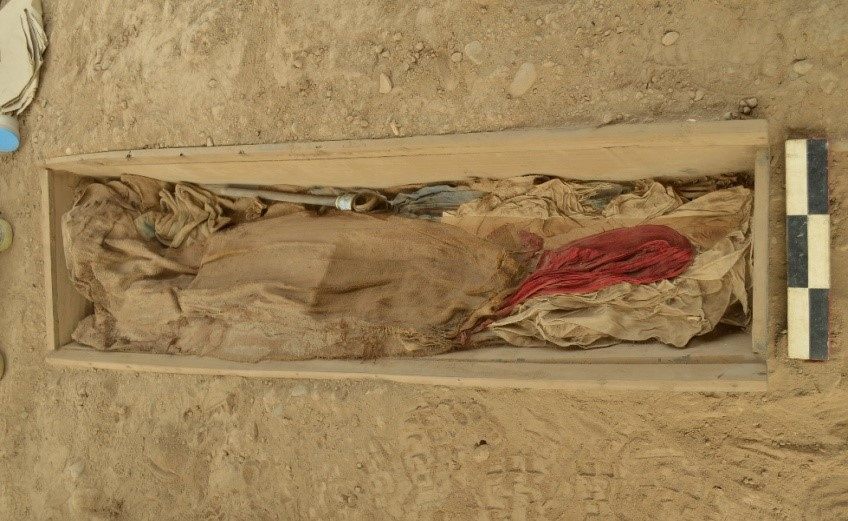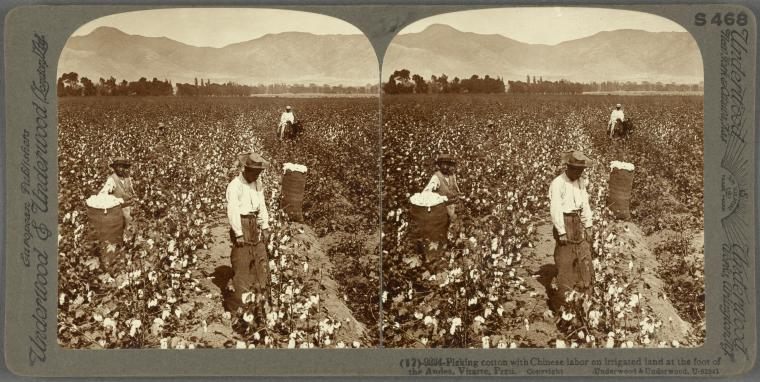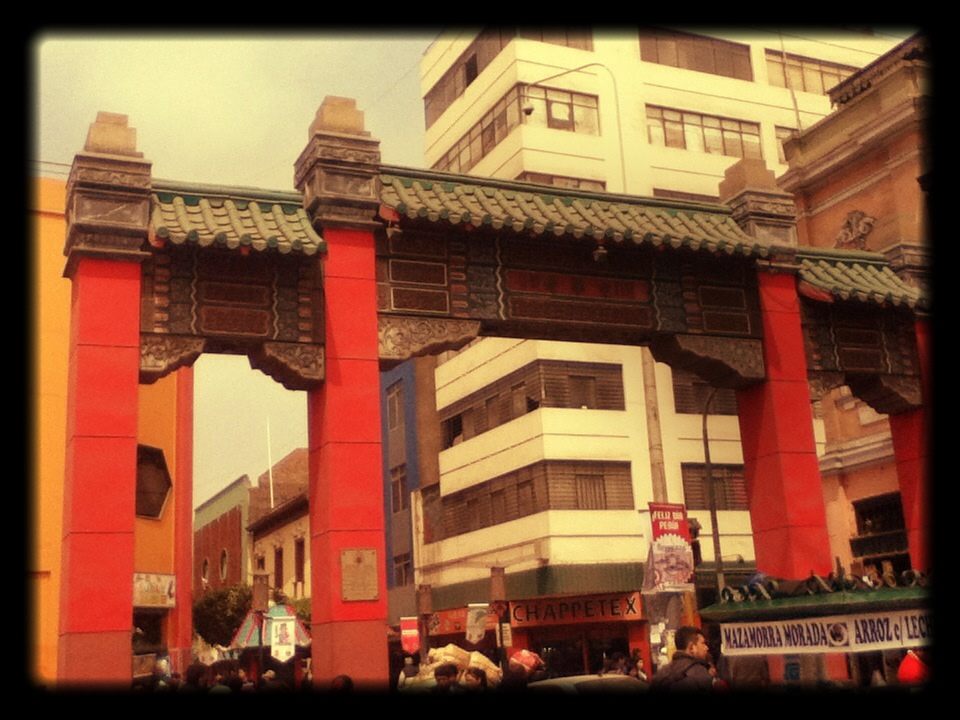Found: The Remains of Chinese Laborers Interred on a Peruvian Pyramid
In the 19th century, 100,000 indentured laborers came to Peru from China.

In Lima, Peru, at the top of a pyramid built thousands of years ago, archaeologists found the remains of 16 Chinese laborers who died here around the late 19th century.
Eleven of the bodies were wrapped in simple cloth shrouds; the remaining five were laid to rest in wooden coffins and wore blue-green jackets, Reuters reports.
During Europe’s “Age of Exploration,” small numbers of people from Asia came to this part of the world on ships that stopped in Macau and other Asian cities. But the largest migration of Chinese people to Peru began in the late 1840s, with the decline of slave labor.
Earlier in the century, England had stopped its slave shipments to this part of the Americas, and Peru had freed itself from Spanish colonial rule in the 1820s. Though the slave trade began to shrink, it wasn’t abolished in Peru until 1854.

The landowners of Peru, though, still wanted cheap labor for their sugar and cotton plantations, for rich guano mines, and for the expansion of the railroad. The government eased the way for former slaveholders with financial grants and subsidies for bringing new indentured laborers to the country. Many of those new contracted workers came from China, where political unrest had created a population of displaced people in need of work. Between 1849 and 1874 around 100,000 Chinese contract laborers, mostly from the province of Guangdong, sailed to Peru under restrictive labor contracts that tied them to landowners from years.
The work conditions for Chinese indentured laborers were harsh, and they were often treated little better than slaves had been. Many indentured laborers died under these conditions. Some managed to fulfill their contracts, though, and many came to settle in Lima. By 1876, the Chinese community in the city had grown so much that it accounted for about 10 percent of total population. In the city, they worked as servants, artisans, or small business people, running stores and restaurants in what would become Lima’s Chinatown. A select few Chinese immigrants became planters and merchants themselves.
But even as labor conditions improved for Chinese people in Peru, they were still marginalized. Even as free laborers, Chinese people were required to keep papers proving they were free and to register with the government. In the 1880s, the terms of labor contracts improved, with clauses that allowed the workers to break their contracts and required them to receive wages. But even then, writes historian Michael J. Gonzales, “planters continued to subject Chinese workers to a harsh system of social control, regardless of their contractual status.”

The remains discovered on the Lima pyramid reflect both the improving conditions for Chinese laborers and their exclusion from parts of Peruvian society. As their economic conditions improved, Chinese families were able to afford more than simple shrouds for their dead. But authorities would not have Chinese people buried in Catholic graveyards, and the ancient pyramids “had a sacred association that might have made them attractive places for burial by Chinese laborers,” Roxana Gomez, who led the archaeological team, told Reuters.
The wave of Chinese immigration to Peru started to slow around the 1880s, as the Chinese government started to restrict the flow of indentured labor out of the country and conditions in China improved. The influence of those migrants has shaped Peru, though; today 15 percent of people in the country can trace their ancestry back to Chinese and other Asian migrants from the 19th century.











Follow us on Twitter to get the latest on the world's hidden wonders.
Like us on Facebook to get the latest on the world's hidden wonders.
Follow us on Twitter Like us on Facebook